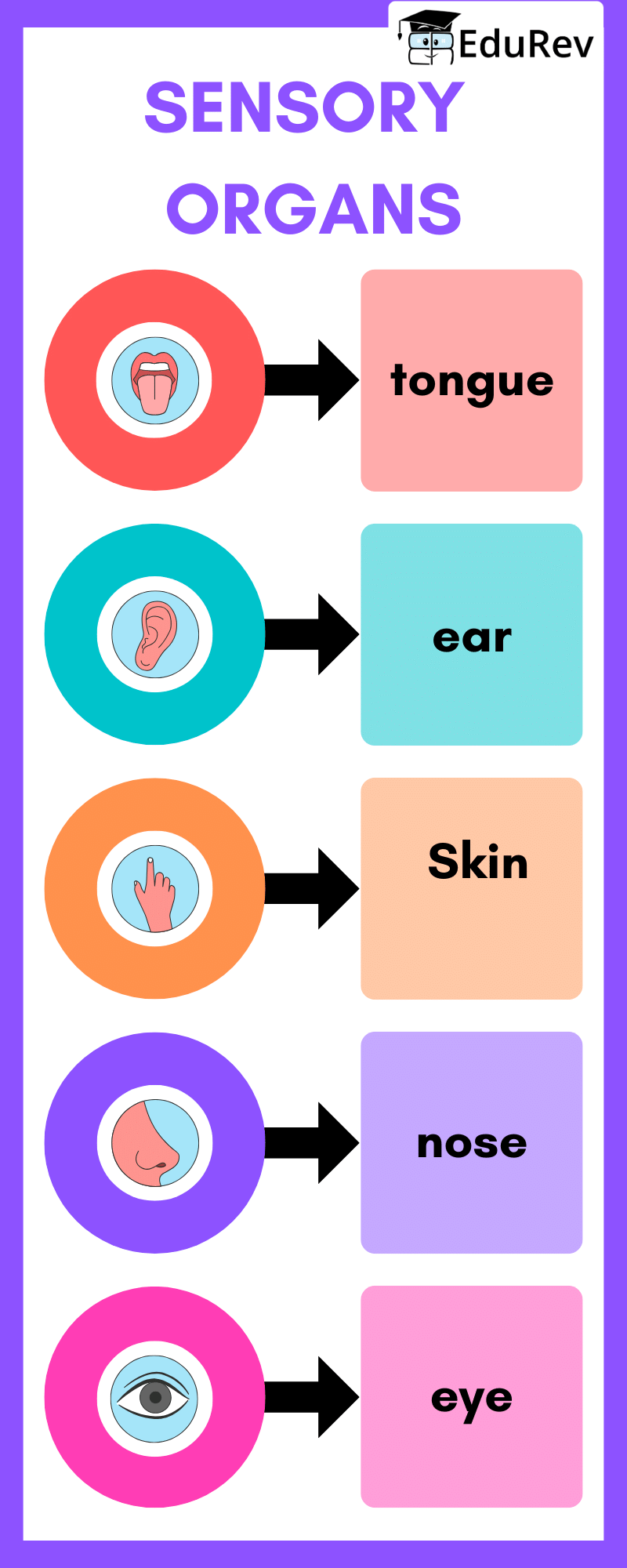Class 1 Exam > Class 1 Notes > EVS for Class 1 > Printable Poster: Sensory Organs
Printable Poster: Sensory Organs | EVS for Class 1 PDF Download

The document Printable Poster: Sensory Organs | EVS for Class 1 is a part of the Class 1 Course EVS for Class 1.
All you need of Class 1 at this link: Class 1
|
33 videos|333 docs|46 tests
|
FAQs on Printable Poster: Sensory Organs - EVS for Class 1
| 1. What are the five main sense organs in the human body? |  |
Ans. The five main sense organs in the human body are the eyes (sight), ears (hearing), nose (smell), tongue (taste), and skin (touch). Each of these organs plays a crucial role in how we perceive and interact with the world around us.
| 2. How do the sense organs function together to help us perceive our environment? |  |
Ans. The sense organs work in conjunction to provide a comprehensive understanding of our surroundings. For example, sight helps us recognize objects visually, while hearing allows us to detect sounds. Smell can enhance our experience of taste, and touch provides tactile feedback. These senses communicate with the brain, integrating information to create a complete sensory experience.
| 3. What role do receptors in the sense organs play in sensation? |  |
Ans. Receptors in the sense organs are specialized cells that detect specific stimuli, such as light, sound waves, chemicals, or pressure. When these receptors are activated, they convert the stimuli into electrical signals that are sent to the brain, where they are interpreted as sensations, allowing us to respond appropriately to our environment.
| 4. Why is it important to protect our sense organs? |  |
Ans. Protecting our sense organs is important because they are vital for communication, navigation, and interaction with our environment. Damage to these organs can lead to sensory deficits that impact daily life and overall well-being. Simple measures, like wearing sunglasses, using ear protection, and maintaining good hygiene, can help preserve their function.
| 5. Can the sense organs adapt to changes in the environment? |  |
Ans. Yes, sense organs can adapt to changes in the environment through a process known as sensory adaptation. For example, when exposed to a strong odor for a prolonged period, the sensitivity of smell receptors decreases, and the perception of the odor diminishes. This adaptation allows us to focus on new stimuli and helps prevent sensory overload.
Related Searches
















